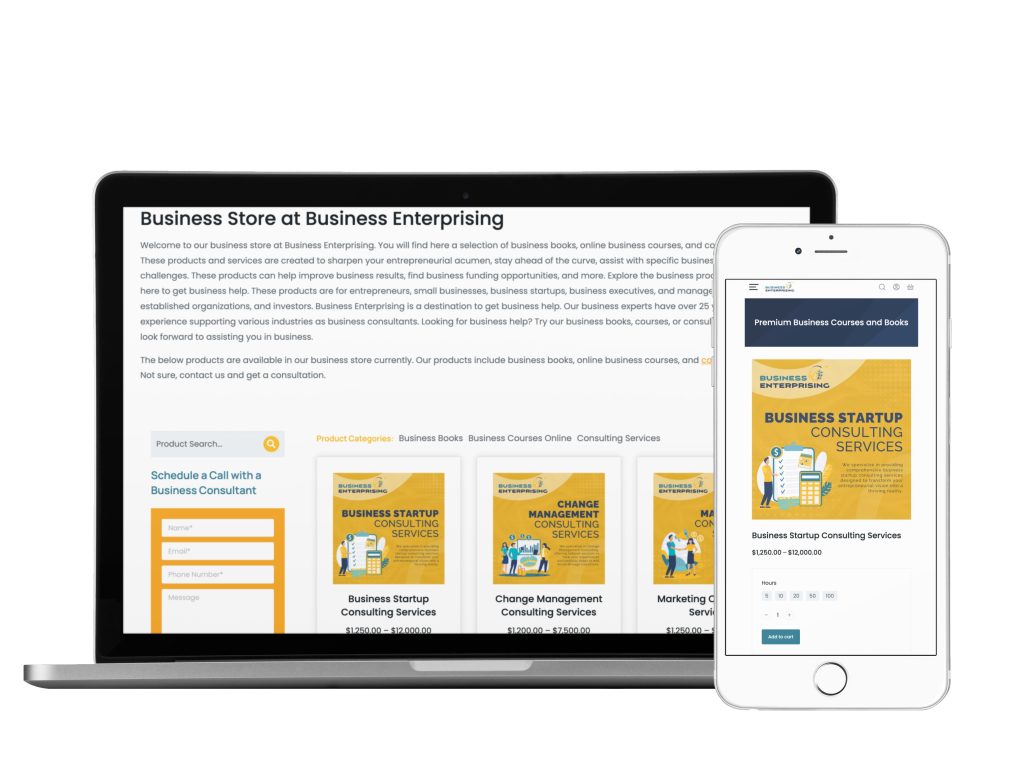In today’s digital age, mobile optimization for business websites is no longer optional. With the majority of internet users accessing websites via mobile devices, ensuring a seamless mobile experience is crucial. Below we’ll explain the importance of mobile optimization for business websites, outlining effective strategies and highlighting the benefits of a mobile-friendly approach.
The Importance of Mobile Optimization
Mobile optimization for business websites is essential for several reasons. Firstly, a significant portion of web traffic comes from mobile devices. Users expect fast-loading, easy-to-navigate websites that function smoothly on their smartphones and tablets. Failing to meet these expectations can result in high bounce rates and lost opportunities.
Moreover, search engines prioritize mobile-friendly websites in their rankings. Google, for example, uses mobile-first indexing, meaning it predominantly uses the mobile version of a website’s content for indexing and ranking. Therefore, mobile optimization directly impacts a site’s search engine optimization (SEO) and visibility.
Additionally, a well-optimized mobile site enhances user experience. Visitors are more likely to stay, explore, and convert on a site that provides a smooth, intuitive mobile experience. Mobile optimization for business websites is thus a critical factor in driving engagement and achieving business goals.
Responsive Design
Implementing responsive design is a fundamental aspect of mobile optimization for business websites. Responsive design ensures that a website adjusts its layout and content according to the screen size and orientation of the device. This approach provides a consistent and user-friendly experience across all devices, from desktops to smartphones.
Moreover, responsive design simplifies website management. Instead of maintaining separate versions for desktop and mobile, a single responsive site adapts to various devices. This efficiency reduces maintenance efforts and ensures that all users have access to the same high-quality content.
Furthermore, search engines favor responsive design. Google recommends responsive web design as it makes it easier for their algorithms to index and organize content. By implementing responsive design, businesses can enhance their SEO efforts and improve their site’s performance.
Fast Loading Times
Fast loading times are crucial for mobile optimization for business websites. Mobile users expect quick access to information, and slow-loading pages can lead to frustration and high bounce rates. Ensuring that a website loads quickly on mobile devices is essential for retaining visitors and enhancing user experience.
Several strategies can improve loading times. Compressing images reduces their file size without compromising quality, speeding up page load times. Minimizing the use of heavy scripts and leveraging browser caching also contribute to faster loading speeds.
Additionally, using a content delivery network (CDN) can enhance performance. A CDN distributes content across multiple servers worldwide, ensuring faster delivery to users regardless of their location. Prioritizing fast loading times is a key aspect of mobile optimization for business websites.
Simplified Navigation
Simplified navigation is another critical component of mobile optimization for business websites. Mobile users typically have less screen space and may find it challenging to navigate complex menus. Streamlining navigation ensures that users can easily find the information they need.
Implementing a clear and concise menu structure is essential. Using dropdown menus, collapsible sections, and intuitive icons can enhance navigation. Additionally, providing a prominent search bar allows users to quickly locate specific content.
Moreover, designing for touch interactions is crucial. Buttons and links should be appropriately sized and spaced to accommodate touch gestures. Simplified navigation enhances user experience and encourages visitors to explore the site further.
Mobile-Friendly Content
Creating mobile-friendly content is vital for mobile optimization for business websites. Content that is easily readable and accessible on mobile devices enhances user engagement. Ensuring that text is appropriately sized and formatted for smaller screens improves readability.
Moreover, using short paragraphs and bullet points can make content more digestible. Mobile users often scan content rather than reading it in detail. Breaking up text with subheadings, images, and videos can make it more engaging.
Additionally, optimizing multimedia content for mobile devices is essential. Videos and images should load quickly and display correctly on various screen sizes. Mobile-friendly content ensures that visitors have a positive experience and stay longer on the site.
Touch-Friendly Design
Touch-friendly design is a crucial aspect of mobile optimization for business websites. Mobile users interact with websites using touch gestures, so designing for touch enhances usability. Ensuring that buttons, links, and forms are easily tappable improves user experience.
Moreover, avoiding small touch targets and crowded elements is important. Providing sufficient spacing between interactive elements reduces the risk of accidental clicks. Touch-friendly design also includes optimizing form fields for mobile use, such as enabling autofill and using appropriate input types.
Additionally, implementing touch-friendly features like swipe navigation and gesture-based interactions can enhance user engagement. Prioritizing touch-friendly design ensures that mobile users can navigate and interact with the site effortlessly.
Local SEO and Mobile Optimization
Local SEO is closely linked to mobile optimization for business websites. Many mobile users search for local businesses and services, making local SEO strategies essential. Ensuring that a website is optimized for local searches can drive more traffic and conversions.
Including location-specific keywords in content and meta tags enhances local SEO. Additionally, maintaining accurate and consistent business information on online directories and review sites is crucial. Optimizing for local SEO ensures that businesses appear in relevant local searches and attract nearby customers.
Moreover, leveraging Google My Business can enhance local SEO efforts. Creating a detailed and optimized Google My Business profile increases visibility in local search results. Prioritizing local SEO as part of mobile optimization for business websites can drive local traffic and boost business growth.
Continuous Testing and Improvement
Continuous testing and improvement are essential for effective mobile optimization for business websites. Regularly testing a website’s performance on various mobile devices and browsers ensures that it remains optimized. Tools like Google’s Mobile-Friendly Test and PageSpeed Insights provide valuable insights and recommendations.
Moreover, monitoring user behavior and feedback helps identify areas for improvement. Analyzing metrics such as bounce rates, session duration, and conversion rates can reveal issues affecting mobile user experience. Implementing continuous improvements ensures that a website remains user-friendly and competitive.
Additionally, staying updated with the latest mobile optimization trends and technologies is crucial. The digital landscape is constantly evolving, and businesses must adapt to maintain their competitive edge. Continuous testing and improvement ensure that mobile optimization efforts are effective and up-to-date.
Conclusion
Mobile optimization for business websites is essential for enhancing user experience, improving SEO, and driving business growth. Implementing responsive design, ensuring fast loading times, and simplifying navigation are critical components. Additionally, creating mobile-friendly content, designing for touch interactions, and optimizing for local SEO are vital strategies. Continuous testing and improvement ensure that a website remains optimized and competitive. Prioritizing mobile optimization ensures that businesses can meet the needs of mobile users and achieve long-term success.


